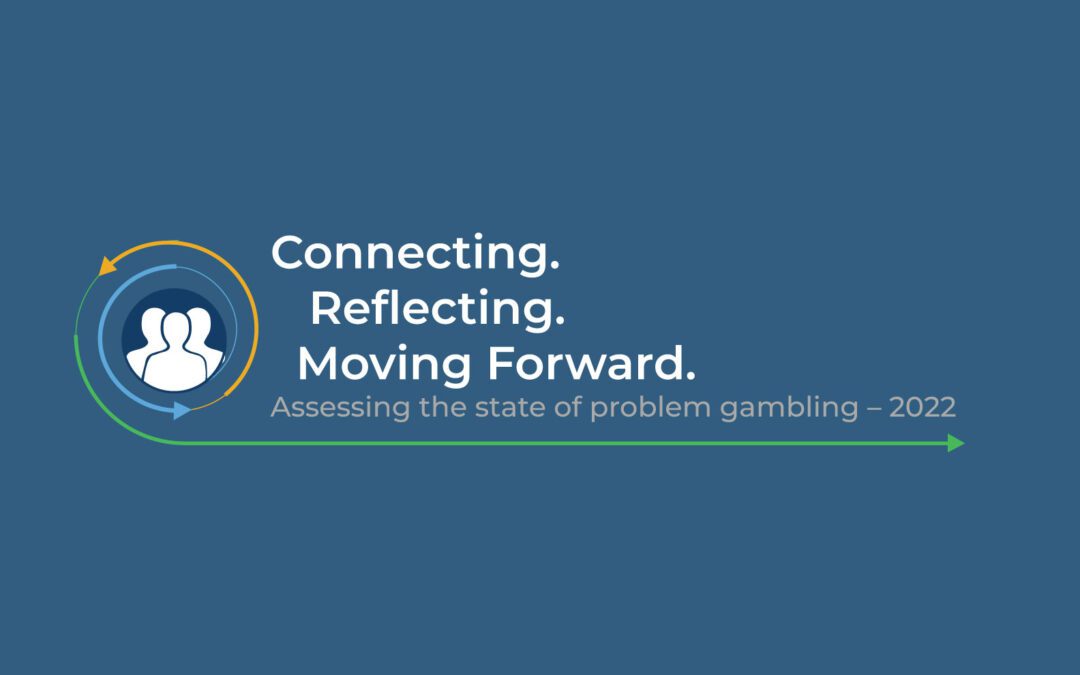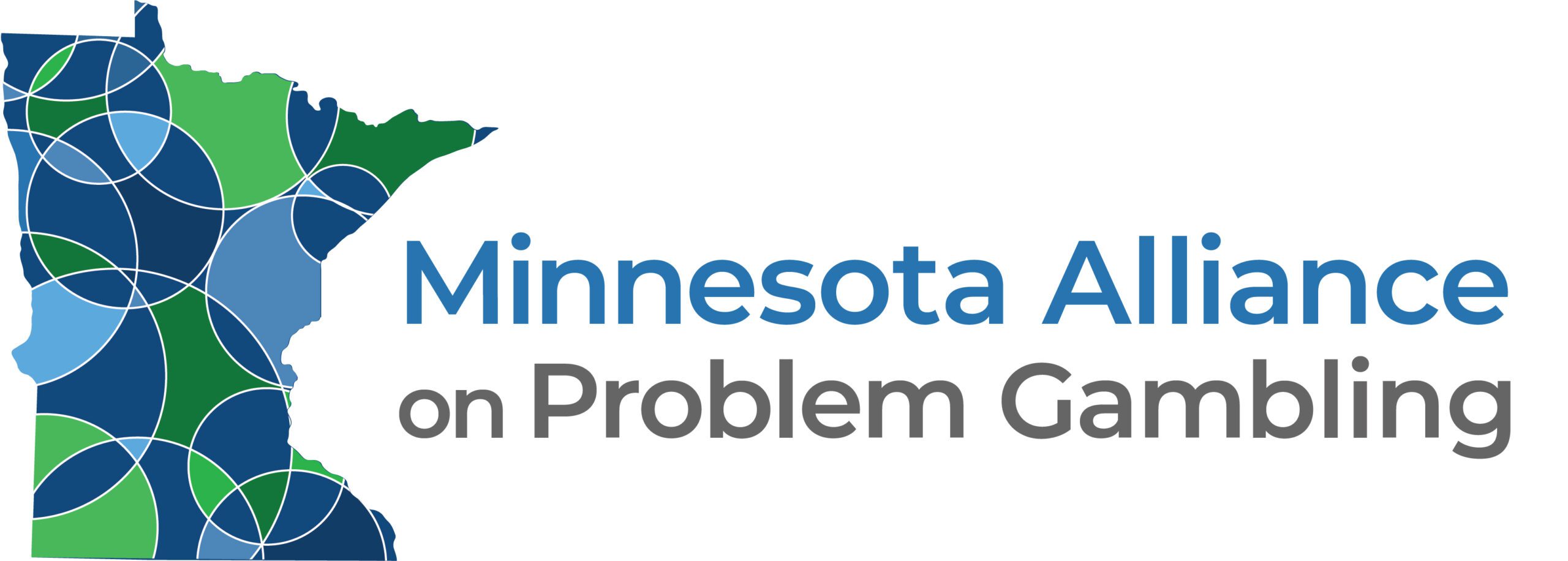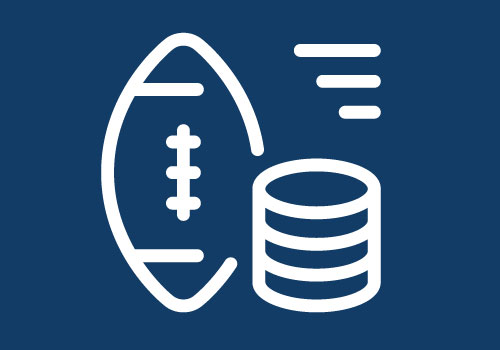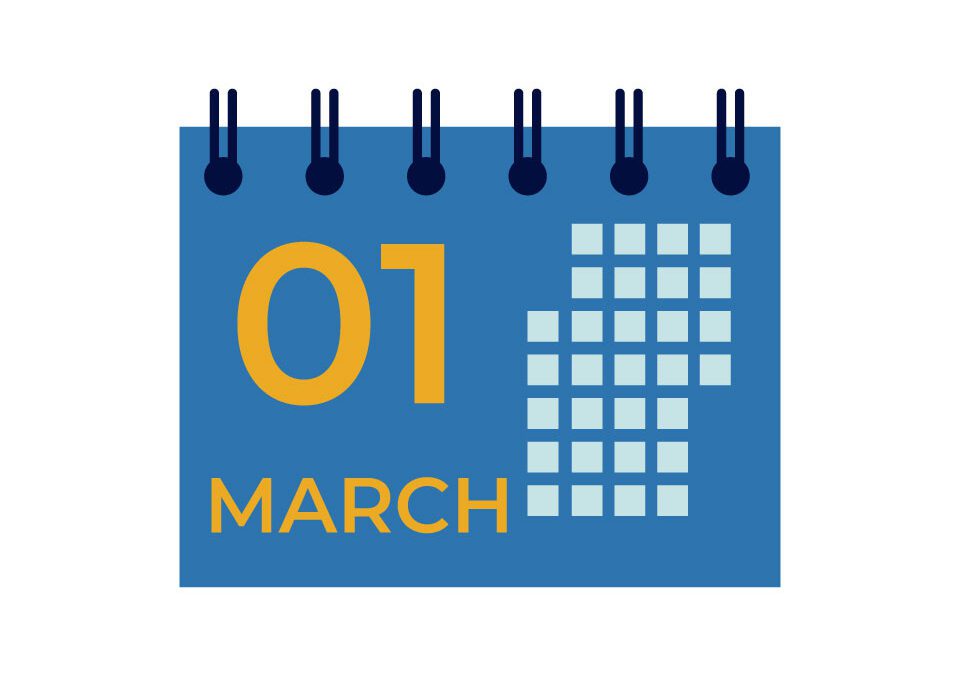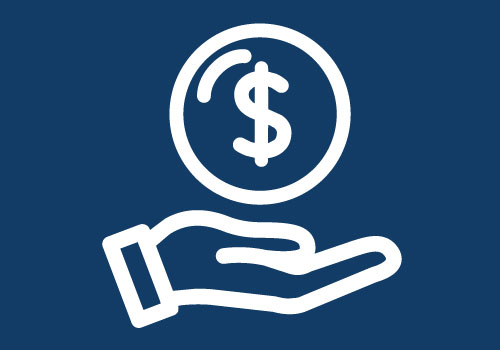
Aug 10, 2022 | PROBLEM GAMBLING, PROFESSIONALS, RESOURCES
The gambling landscape continues to shift quickly, as new types of gambling and gaming activities proliferate. Those working in prevention, treatment and research need to understand and be responsive to these changes.
This year’s conference, which will be offered in person and online, will cover a variety of topics with two presentation tracks, one geared toward treatment professionals and another for a more general audience. The full conference will be recorded, so whether you join us in person or online, you won’t miss any of our content. CEUs will be offered.
Who Should Attend?
The conference is appropriate for many people, including:
- Gambling, alcohol and drug addiction counselors and therapists
- Other health care and social service workers
- Law enforcement officers
- School and church leaders
- Lawyers and financial professionals
- People in recovery and their families
- Policymakers
- Gaming operators and regulators
- Behavioral health researchers
- CEU credits are available from various professional boards.
Programs and Speakers
While conference details are still falling into place as of this writing, here are some of the programs and speakers that will be part of the conference:
- “Problem Gambling and Alexithymia: Implications for Interviewing, Screening, and Intervention,” presented by Jerrod Brown, Ph.D., Pathways of St. Paul.
- “Gambling Disorders in a New Era of Gambling,” presented by Jody Bechtold, LCSW, ICGC-II, BACC, CGT, CEO of The Better Institute.
- “How Can We Move Forward with Cultural Humility/DEI Absent a Strategic Plan? What’s Your Navigation System?” presented by Deborah Haskins, Ph.D., LCPC, board-approved supervisor, MAC, ICGC-II, CCGSO, BACC, CGT, President, Maryland Council on Problem Gambling.
- “Sports Betting Integrity and Today’s Student Athlete,” presented by Dan Trolaro, MS, Vice President of Prevention, Epic Risk Management.
- “Emergence of Problem Gambling from Childhood to Emerging Adulthood: A Systematic Review,” presented by Dr. Serena King, L.P., Professor and Chair, Psychology of Hamline University.
- What:
MNAPG annual conference
- When:
November 15
- Where:
Heritage Center of Brooklyn Center and virtually
- Cost:
Free
- Registration Deadline:
October 25 (for in person)
November 10 (for Zoom)
- For More Information: www.mnapg.org/conference

May 25, 2022 | PROBLEM GAMBLING, SPORTS BETTING
MNAPG Northern Light Spring 2022
The Super Bowl and March Madness, which take place in February and (primarily) March, respectively, are the most popular sports betting events in the U.S. With the legalization of sports gambling in many states, both events experienced record wagers. Here’s a snapshot of each event.
Super Bowl LVI
Information about betting activity for the Super Bowl is not yet complete, but it’s clear that wagering beat out the previous record from 2021. According to legalsportsreport.com, as of April 4, 14 states reported a combined $588.1 million in handle (amount of money wagered) and $45.9 million in revenue. This compares to $486.5 million in handle and $43 million in revenue from 17 legal jurisdictions in 2021. Notably, even states with neighboring states that legalized sports gambling since last year saw a considerable year-to-year increase.
NCAA Basketball Tournament
The NCAA Men’s Basketball Tournament received more betting action than ever before. According to SportsHandle.com, prior to the Final Four games, 31 percent of Americans aged 21 to 64 placed bets on tournament games, with about two in three saying they bet more this year than on any previous tournaments.

May 25, 2022 | ADVOCACY, PROBLEM GAMBLING
MNAPG Northern Light Spring 2022
This March marked the nineteenth observance of the National Council on Problem Gambling’s (NCPG) Problem Gambling Awareness Month. Along with the 35 state affiliates, NCPG focuses extra efforts throughout the month to raise awareness that gambling addiction is a public health issue, to reduce its stigma and to emphasize that gambling disorder is a treatable and chronic condition.
For MNAPG’s part, we increased our public awareness campaigns through paid social media and the Star Tribune. NCPG provided a daily message which we coupled with an appropriate graphic and shared on our Facebook, Instagram, Twitter and LinkedIn pages.
We had several small campaigns using the Star Tribune’s digital reach and targeted emails. We ran a campaign focused on the problem gambler for the first half of the month, and then switched to a focus on sports betting to coincide with the heightened attention of the NCAA basketball tournament. These are examples of those ads:

Another annual campaign associated with PGAM is National Problem Gambling Screening Day, the second Tuesday in March, when we reach out to healthcare professionals in the substance disorder and mental health arenas to raise awareness that gambling addiction is often co-occurring. We try to emphasize that minimal screening would go a long way in helping those who may have a gambling problem seek the help they need. Unfortunately, most LADCs and social workers lack training in treating problem gambling and may not even be aware that it’s an issue to discuss with clients. We encourage them to ask the three brief bio gambling screening questions. If their client answers yes to any of the three questions, it’s recommended that the individual seek a more thorough assessment to determine if they have a gambling disorder or is at increased risk.
We also tried something new this year. We geofenced the capitol complex, meaning that anyone with a cell phone who entered the capitol, senate or house buildings would likely see one of our ads directed to legislators with some basic statistical information. We know that many state legislators know little about problem gambling, and as the body considers legalizing sports betting, we wanted to remind them of the issue. The success of this effort is unknown as of this writing as the analytics have not yet been processed. We will analyze this info and likely continue to nudge legislators as the bill continues to move through the body and as MNAPG proposes additional legislation.

May 25, 2022 | PROBLEM GAMBLING, RECOVERY, STORIES
MNAPG Northern Light Spring 2022
At a very young age, I remember people telling me, “You’re lucky. You’re just like your grandma.”
Well, my grandmother was a compulsive gambler. But gambling didn’t have devastating consequences to her life because she could only gamble the set amount of money my grandfather gave her. Her gambling never caused her to go without food or to miss rent.
I was raised in a very dysfunctional family. My mother used drugs and would let drug dealers and users sexually abuse her for drugs. As a result, I grew up with no boundaries and would do everything I could to not feel anything.
Until my mid 30s, I went to casinos every now and then, maybe once a year. It was fun. But then two things happened. First, I got divorced, and I started going to the casino more. And second, I got a big win.
When I first won big, I remember thinking this should be my job, that I could never make money this fast. My bets got higher to get the same dopamine rush.
It didn’t take long before I knew I had a gambling problem, but I didn’t know how to label it. I called myself a “gamblaholic” because I didn’t know of any other term. Nobody told me to get help.
I spent a six-figure court settlement in the span of three months and lived in seven places in less than a year. I dated men and essentially had sex for money so that I could continue to gamble.
It got to the point where every time I was driving back to the casino, I’d think about ways I could hurt herself. The wanting to die consumed me. I thought, “If I win, I’ll live. If I don’t, then I can always commit suicide.” I tried to commit suicide three times.
I needed and wanted help, so I googled gambling help in Minnesota. I called and had an intake meeting with an outpatient counselor. She highly recommended that I go for inpatient help at Vanguard Center for Gambling Recovery. However, I had joint custody and after a tumultuous divorce my ex would not take my son beyond the schedule. I wanted so badly to get help but felt stuck.
A week after I tried to hang myself, my final suicide attempt, my 18-year-old son finally said to me, “Mom, please go get help.” He said he would take care of the house and his brother so that I could go. I can honestly say that he saved my life. I had no more excuses to not get help.
My gambling often went hand-in-hand with using meth. Thankfully, Vanguard was able to help with both issues. There is no question in my mind that getting over gambling is much harder than getting over drugs, even though gambling doesn’t involve ingesting anything into your body.
Indeed, there is so much that people don’t understand about gambling addiction, even in health care. I work in nursing, and when I talk to the providers about gambling disorder, most say they never received training on the topic. I tell them about the high suicide rate, that you can’t wake up and be sober as you can from alcohol, and that when you look at your checking account, it’s still negative. These providers may see people with gambling problems but have no idea where to send them for help.
I’ve talked to my pastor often and try to share my story at church, where they most often talk about drug and alcohol addiction. I am willing to share my story to anyone if it can help somebody.
If anyone reading this wonders if they have a problem and are on the fence about what to do, here is what I would say. Go online and learn about gambling addiction. Take the 20-question screening to see how many questions you answer “Yes” to. Then, if it’s appropriate, seek help, whether it’s searching for “Minnesota gambling help,” looking into Gambler’s Anonymous or calling the state’s helpline (1-800-333-HOPE). People who are struggling should also know that there are programs to help them financially so they can get treatment.
My story is not very pretty, but I am truly grateful for my addiction because it has turned my life around. My relationships are better, I’m honest and open, and am able to share things that bother me. I’m happy and working hard to earn a paycheck. I appreciate this so much more than if I didn’t have a gambling addiction and hadn’t gotten help. I have serenity.

May 18, 2022 | HEALTHY PLAY, PROBLEM GAMBLING
MNAPG Northern Light Spring 2022
In Denmark, the Ministry of Taxation will require mandatory players’ cards beginning July 1, 2022. This will eliminate the ability for a player to bet anonymously. Danish authorities hope it will reveal gaming patterns as a means of detecting signs of money laundering or match fixing. It will also prohibit players under the age of 18 from placing a bet, notify whether a player has voluntarily self-excluded from gambling, or if they have exceeded their self-set spending limit before a wager is made. While the impetus behind this regulation is to reduce crime, tools such as these show promise in identifying players who can’t keep to their spending limits before they’re betting gets out of hand.
Would U.S. players welcome the opportunity to have easy access to their own records, which might include the amount of money they’ve spent, won, and lost, and the time they’ve spent gambling? Would they be willing to set limits, and how often they adhered to the limits? We would like to think so, and thus have added these components to MNAPG’s regulatory list for online sports betting. Until we know more about when the sports betting legislation passes and the form that it takes, it’s hard to say how much influence MNAPG can have in shaping these important responsible gambling regulations.

May 18, 2022 | PROBLEM GAMBLING, SPORTS BETTING
MNAPG Northern Light Spring 2022
In January, Minnesota’s Louie Anderson, a nationally beloved comedian, died. His death was felt in comedy circles as well as among Minnesotans who took pride in a local boy making it big.
As with all of us, however, he had his human frailties. He also made an impact on the recovery and addiction community, where he was known for his candid stories about growing up with an abusive, alcoholic father, but he also had a gambling problem.
In a 2016 interview, < link to https://www.youtube.com/watch?v=hTMWugFklMo> when Louie was in the thick of his gambling addiction, he shared the story of a night when he lost $80,000 in Los Angeles, then drove to Las Vegas and won $100,000 in the middle of the night, making it back to Los Angeles in time to film a television commercial the very next morning. The interviewers seem more entertained by the story than interested in exploring his gambling addiction.
Depending on the news outlet, Louie was either a big-time, revered gambler —or he had a gambling problem. Indeed, the perceptions of gambling based on celebrity behavior can be deceiving.
Stories of celebrity gambling can normalize, if not trivialize, how destructive the activity can be. While the wealth amassed by many celebrities can appear to minimize the magnitude of their gambling, it’s clear that gambling can — and has — become a problem for some. Indeed, we know that gambling addiction is an equal opportunity employer and can affect virtually anyone – men or women, young or old, and those from every religion, race and socio-economic background. Sadly, that includes celebrities.
Section from Season of Sports Betting
Other notable findings detailed by SportsHandle.com, which were based on data from an online study conducted by National Research Group, included the following:
- Thirty-nine percent of bettors reported that they wagered a total of at least $250. (Sixty-three percent reported betting at least $100.)
- Sixty percent of people who bet on this year’s NCAA tournament did not fill out the traditional bracket.
- Fifty-four percent of bettors said that legalized online sports betting has made them less interested in brackets.
- Sixty-five percent said that the amount they wagered this year has been the most they’ve ever bet on an NCAA tournament.
- Six percent of bettors wagered more than $1,000 while sixteen percent wagered between $500 and $999.
- The majority of bettors (63 percent) bet on between three and 10 games.
- Fifty-four percent placed a wager on the first round, with declining percentages betting on succeeding rounds.
- Thirty-nine percent made moneyline bets (straight bets on winners and losers) while twenty-five percent wagered on same-game parlays (multiple bets or “legs” of a game).
While the SportsHandle.com article was published prior to the Final Four weekend, betting on the last three games was expected to be quite heavy, as the four teams comprising the Final Four were among the most heavily bet in the tournament.
Page 7 of 13« First«...56789...»Last »
